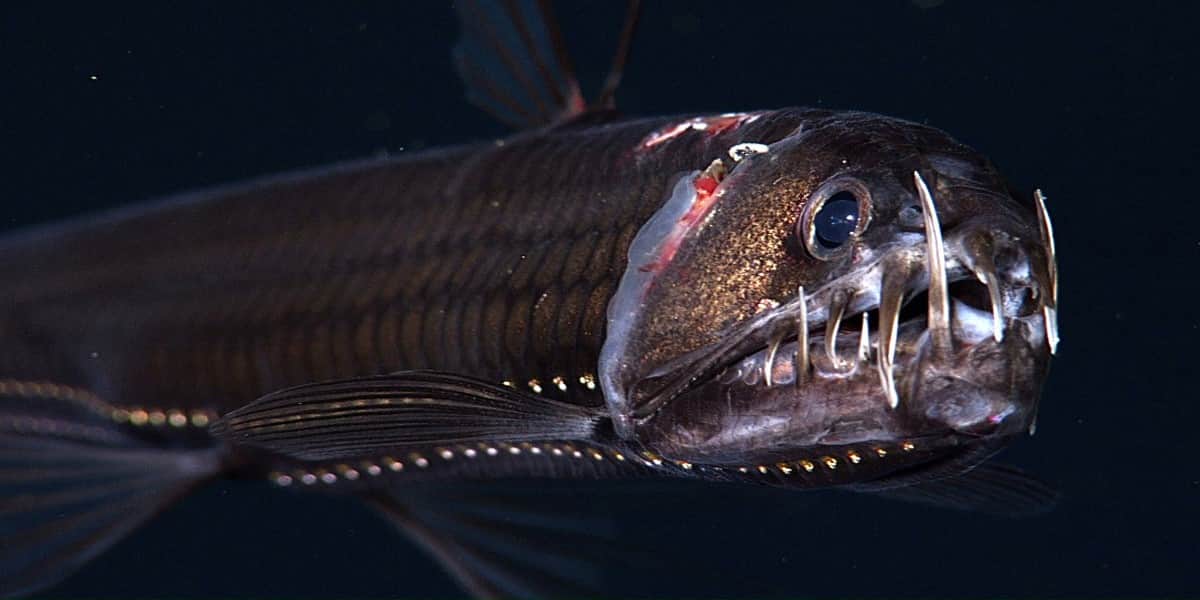Sloane’s Viperfish : Deep Sea Fish
Doodlebrary
- Sloane’s Viperfish is a Deep Sea Fish.
- Available in 13,000 feet or 4,000 meters or 4 KM more From the Sea Level.
- Sloane’s viperfish (Chauliodus sloani) is a species of deep-sea fish that belongs to the family Stomiidae.
- These mysterious creatures inhabit the deep, dark waters of the world’s oceans and are known for their bizarre appearance and unique adaptations to their extreme environment.
- Appearance: Sloane’s viperfish has a long, slender body with sharp teeth and a large mouth filled with fang-like teeth. They are typically dark in color, ranging from black to dark blue or brown, which helps them blend into the deep-sea environment.
- Bioluminescence: One of the most striking features of this fish is its bioluminescence. They have photophores (light-producing organs) along their body, which they can use to produce light. This bioluminescence is thought to serve multiple purposes, including attracting prey and potentially deterring predators.
- Size: Sloane’s viperfish are relatively small compared to some other deep-sea species, typically growing to lengths of around 8 to 12 inches (20 to 30 centimeters).
- Depth: These fish are found in the mesopelagic and bathypelagic zones of the ocean, which can be as deep as 13,000 feet (4,000 meters) or more. They are adapted to the extreme pressures and cold temperatures of the deep sea.
- Feeding Behavior: Viperfish are carnivorous predators that feed on a diet of smaller fish and invertebrates. They use their long teeth to impale their prey and are capable of swallowing prey larger than themselves due to their expandable stomachs.
- Solitary Creatures: Sloane’s viperfish are generally solitary and are rarely observed in groups. Their isolation in the deep ocean makes them challenging to study.
- Reproduction: Not much is known about the reproductive behavior of Sloane’s viperfish. Like many deep-sea creatures, they likely have unique adaptations and strategies for reproduction in the harsh conditions of the deep ocean.
- Named After: Sloane’s viperfish is named after Sir Hans Sloane, an Irish physician, and naturalist known for his contributions to the study of natural history. The species was first described by Carl Linnaeus in 1758.
- Sloane’s viperfish is just one of the many fascinating and poorly understood species that inhabit the deep-sea environment.
- Due to the extreme depths at which they live, studying these creatures is a challenging endeavor, and there is still much to learn about their biology and behavior.
